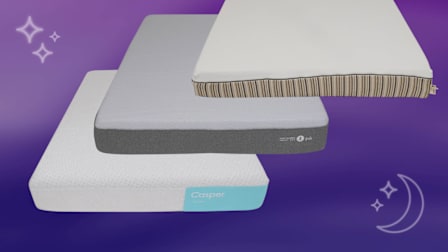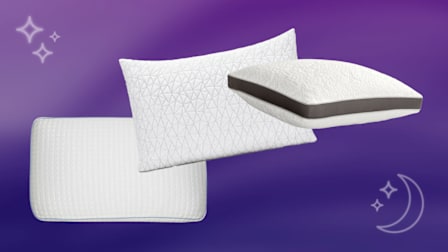How to Use Earplugs Correctly
Audiologists from the Cleveland Clinic explain how to choose earplugs that fit and how to wear them safely

When worn correctly, earbuds can help block out distracting ambient noise, which can make sleeping or concentrating easier. However, when worn incorrectly, earbuds can lead to an infection in the ear canal. We spoke with two auditory experts at the Cleveland Clinic about how to wear earbuds correctly, and for how long. We also pulled guidance and step-by-step videos on how to insert earbuds from the National Institute on Deafness and Other Communication Disorders (NIDCD).
- Tips From Experts: Take Breaks Consider Emergencies
- How to Insert and Remove Earplugs
And if you’re on the search for a pair of earbuds, we also evaluated eight earplug models to find out which ones helped wearers get a better night’s sleep. We found that there’s more to earplugs beyond inserting and wearing them—you have to find the right material and size that works for you, and you have to take steps to take good care of your ears.
Take Breaks From Using Earplugs for Sleep
Sarah Sydlowski, AuD, PhD, and audiology director of the Cleveland Clinic’s Hearing Implant Program, explains that it’s natural for our ears to produce wax, but it’s also natural for that wax to move out of our ears when we sleep.
You May Need Other Means of Being Alerted in Case of Emergency
Sydlowski, who treats patients with acute hearing loss, says that using earplugs for sleep could endanger you in a different way, too. “Depending on how much hearing you have to start with, wearing earplugs could reduce sounds enough that you also wouldn’t hear a smoke alarm, and for safety reasons, especially if you already have hearing loss, you might need to use a different style of alerting device,” such as a smoke and carbon monoxide detector that will flash a bright light in addition to sounding an audible alarm.
Be Patient When Trying Earplugs for Sleep
Ruff says that for easier rest, it’s less important that wearers find earplugs that cut maximum noise, though “you want the plugs to block enough sound to keep things quiet.” But she says it’s more important that you find something that’s comfortable. “You don’t want to wear a sleep plug that interferes with getting a good night’s sleep because it is too large, too small, or is made of material that is too hard and uncomfortable."
This might take some trial and error. Ruff says an earplug “that is too large will likely not seal the ear and would be uncomfortable. An ear plug that is too small would not reduce sound sufficiently and may fall out.” She says that side sleepers may find premolded plugs “too hard.”
How to Insert and Remove Earplugs
The three most popular types of earplugs are disposable foam, premolded, and custom earplugs. We pulled guidance from the NIDCD to put together a guide on how to insert and remove each type correctly.
Disposable Foam Earplugs
Disposable foam earplugs are the least expensive type of earplug, but they can be used only a few times. This is because they are made with an open pore structure, which makes them have a “tendency to breed bacteria,” Ruff says.
- Wash your hands before handling earplugs.
- Squish and roll the earplug. Sydlowski says you should try to make an “elongated shape; don’t smoosh them down but roll them between your thumb and forefinger.”
- To insert them correctly, pull the top of the ear up and back. “That opens and straightens your ear canal,” Sydlowski says. Once you’ve pressed it into your ear, let go of the back of your ear but hold a finger over the end of the plug to keep it filling up the ear canal rather than spilling out.
- To remove, the NIDCD says, slowly twist the earplug to break the seal with the ear canal and then pull it out of your ear. Watch the NIDCD’s video here.
Premolded Earplugs
On the other hand, premolded earplugs are made from plastic, rubber, or silicon. They are designed with a cone-shape that helps decrease the sound intensity evenly across different pitches. In our earplugs evaluation, the highly rated premolded earplugs proved comfortable for sleeping.
- Wash your hands before handling earplugs.
- To insert them correctly, pull the top of the ear up and back, to open and straighten the ear canal.
- Use your other hand to gently slide the earplug in, until you can hear that ambient sound is cut and the plug forms a kind of seal.
- The NIDCD suggests having a spouse or friend check the fit or looking in the mirror to make sure the insertion is deep enough but not too deep. If it causes pain, remove the earplug.
- To remove, the NIDCD suggests rocking the ear tip gently as you pull the earplug tip outward. Watch NIDCD’s video here.
Wax Earplugs
- Wash your hands before handling wax.
- Read the instructions, which vary by brand.
- Insert material into the ear by pulling the top of the ear up and back. In our earplugs evaluation, we found that being very gentle allowed the material to seep into the ear canal. Don’t shove; coax the material in.
- To remove, gently tug from the top of the plug while lifting the top of the ear.
It is worth mentioning that some experts like Sydlowski don’t recommend wax earplugs over other varieties, but they are an option.




















